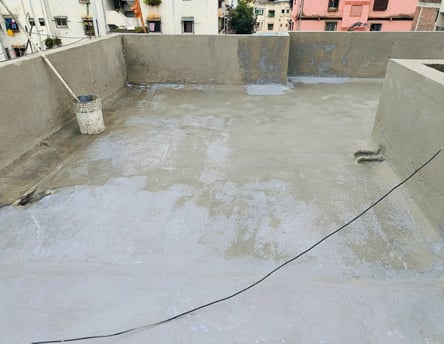Roof Waterproofing
Roof waterproofing is the process of applying materials to a roof surface to prevent water from leaking into a building. This is essential for maintaining the structural integrity of a building and preventing water damage to the interior, including ceilings, walls, insulation, and electrical systems. Proper waterproofing extends the lifespan of the roof and helps avoid costly repairs.


Roof Waterproofing


Roof waterproofing is the process of applying materials to a roof surface to prevent water from leaking into a building. This is essential for maintaining the structural integrity of a building and preventing water damage to the interior, including ceilings, walls, insulation, and electrical systems. Proper waterproofing extends the lifespan of the roof and helps avoid costly repairs.
Roof Waterproofing Methods
Liquid Membrane Waterproofing
Description: Liquid waterproofing membranes are applied as a liquid and form a seamless, flexible layer on the roof surface once cured.
Materials: Acrylic, polyurethane, or bitumen-based coatings.
Bituminous Membrane Waterproofing
Description: Bituminous waterproofing uses sheets made from bitumen, a tar-like substance, which is either cold-applied or torch-applied to the roof.
EPDM (Ethylene Propylene Diene Monomer) Rubber Roofing
Description: EPDM is a synthetic rubber membrane used in waterproofing, commonly used for flat or low-sloped roofs.
Polyurethane Membrane Waterproofing
Description: Polyurethane is a type of liquid membrane that creates a highly durable waterproof layer.
Cementitious Waterproofing
Description: Cementitious waterproofing is based on a cement mixture, which is applied directly to the roof surface to prevent water infiltration.
Torch-on Waterproofing Membranes
Description: These are bitumen-based membranes that are heated using a torch to melt the bottom layer and bond them to the roof.




